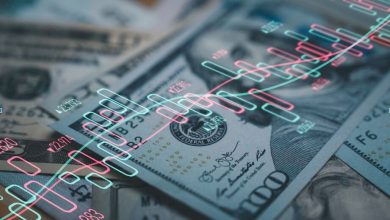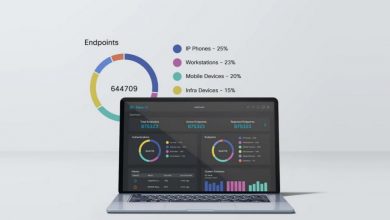How is artificial intelligence disrupting investment banking

For years, the promise of AI in finance felt like a distant hum—a theoretical concept discussed in boardrooms and at Davos. But as we stand here in the late summer of 2025, that hum has become a roar. Artificial intelligence is no longer just optimizing customer service with chatbots or flagging suspicious transactions. It’s now wielding a silicon scalpel, precisely and fundamentally reshaping the most complex, lucrative, and traditionally human-centric corner of the financial world: investment banking.
And for the legions of sharp-suited, Ivy League-educated bankers who have long been the masters of this universe, the message is clear: adapt or become a relic.
Beyond the Hype: AI as the Bank’s New Central Nervous System
First, let’s move past the basics. The real AI revolution in banking isn’t happening on the customer-facing front lines; it’s in the back-office and middle-office operations that form the industry’s core.
Hyper-Automation in Deal Sourcing & Analysis: Traditionally, junior analysts spent thousands of hours buried in Excel, sifting through financial statements, market data, and news reports to identify potential M&A targets or assess a company’s health. Today, sophisticated AI platforms can do this in minutes. They ingest global data streams—from SEC filings to satellite imagery of factory parking lots—to identify undervalued assets, predict market shifts, and model synergistic M&A outcomes with a speed and scope no human team can match.
Due Diligence on Steroids: The due diligence process—a critical but tedious part of any deal—is being completely upended. Instead of armies of associates manually reviewing thousands of pages of contracts for risks and liabilities, Natural Language Processing (NLP) models now scan entire data rooms in a matter of hours. They can flag non-standard clauses, identify hidden risks, and summarize key findings, reducing a multi-week slog into a weekend task and dramatically lowering the risk of human error.
The Rise of the Algorithmic Strategist: We’ve had algorithmic trading for decades, but this is different. We’re not just talking about high-frequency trading. We’re talking about generative AI creating novel, complex financial instruments and hedging strategies based on real-time geopolitical analysis, supply chain disruptions, and even social media sentiment. The “big idea” that a star trader once brought to the table can now be one of a thousand scenarios generated by a machine before the morning meeting.
The Investment Banker’s Existential Crisis
So, where does this leave the investment banker? Their value has historically been built on three pillars, all of which are now being eroded by AI. We spoke to Ai Researcher and founder of Investment Banking Ai Tool, Detectil, Cameron Batt around what he thinks Ai does that could threaten the industry.
“Ai like ChatGPT isn’t advanced enough to be compared to top bankers from an output perspective. You can’t train years of critical decision making and hedging with an ‘off-the-shelf’ Ai model. However, Detectil and other custom LLM’s that are specifically for investing do pose a threat. These platforms can pull unlimited data points from unlimited sources, combining them with a smart language models that can articulate these findings. As the tech progresses, it will become exceedingly difficult to deny it’s application in the industry and the value it brings to operations.
Pillar 1: The Analyst’s Grind (Data & Modeling) The traditional career path in investment banking starts with “the grind.” Two to three years of sleepless nights building financial models, formatting pitch decks, and pulling data. This entire function is on the verge of extinction. Why pay a recent graduate a six-figure salary to do what a generative AI subscription can do faster, more accurately, and without complaint? The work of a junior analyst is rapidly becoming a feature in a software suite. Just connect your Bloomberg terminal to your LLM and off you go!
Pillar 2: The Associate’s Expertise (Process & Execution) Mid-level bankers manage the deal process. They are the masters of due diligence, valuation models, and the intricate dance of execution. As we’ve seen, AI is automating large swaths of this. While human oversight is still needed, the “process manager” role is shrinking. The value is shifting from doing the analysis to questioning the analysis produced by the AI.
Pillar 3: The Managing Director’s Rolodex (Relationships & Strategy) This is where the debate gets heated. The common refrain is, “AI can’t replicate human relationships.” And that’s true—for now. An AI can’t take a CEO out for a round of golf to build trust.
However, AI is becoming an indispensable tool for even the most senior bankers. It can arm them with unprecedented insights before a meeting, suggesting talking points based on a client’s recent business performance, personal investment portfolio, and even public statements.
More critically, as AI democratizes high-level strategic analysis, the premium a client is willing to pay for a human’s advice shrinks. If an AI can deliver an 80% solution for a fraction of the cost, the human banker’s advice must be in that top 20% to justify the multi-million dollar advisory fees. The pressure to deliver truly unique, world-class strategic insight has never been higher.
The Banker of Tomorrow: The Centaur Strategist
This isn’t an obituary for the investment banker, but it is a eulogy for the traditional role. The bankers who thrive in the next decade will not be the ones who can build the best Excel model. They will be those who can operate like a “centaur”—the mythical creature that was half-human, half-horse, combining the best of both.
The banker of tomorrow will be a Centaur Strategist, blending human intuition with machine intelligence. Their key skills will be:
Prompt Artistry: Knowing how to ask the AI the right questions to uncover hidden opportunities and risks.
Critical Oversight: Understanding the limitations and biases of AI models and knowing when to challenge their outputs.
Ethical Judgment: Making the final call on complex, nuanced decisions where pure data isn’t enough.
High-Level Synthesis & Storytelling: Weaving the data-driven insights from AI into a compelling strategic narrative that a CEO and a board can understand and act upon.
The assembly line of banking talent—where analysts are forged through repetitive, manual tasks—is broken. The industry is heading toward a leaner, more elite model, with fewer people who are paid not for the hours they work, but for the quality of their questions and the wisdom of their judgment. The silicon scalpel is making its incision, and the entire anatomy of Wall Street is about to change forever.

Source: How is artificial intelligence disrupting investment banking



